Fire and Police Station for the Government District
The new station for the police and fire departments of the government district of Berlin is an extension to a free-standing nineteenth-century structure which lies on the edge of a former goods yard close to the river Spree. The solitariness of this once rather grand building is a poignant reminder of its original setting - when it was safely integrated into the typical block structure of 19C Berlin.
The single-banked rear wing of the building is used as a back-bone for the extension, which - as a luminous floating body - clings to the lower part of the expansive sheer brick wall (which, being a party wall, would originally have been concealed).
To avoid placing new foundations near the existing building large X shaped columns of composite construction were placed beneath the new building The space created underneath provides covered accommodation for the various vehicles of the police station and fire brigade, whilst the yard accommodates the necessary manoeuvres of the large fire engines.
As the building is set back considerably from the main road and lies approximately six metres below street level, the visitor approaches the police station across a new foot-bridge on the level of the bel-étage. To enter such a building through its representative classical façade via a window on the first floor is both a pragmatic solution and a gesture appropriate to the surreal quality of its circumstance.
Whilst the existing building was to be renovated in accordance with its historic character, the extension was conceived contrast the materiality of the new against the old.
For example, to use reflective coloured glass against the matt red brick and stone, and in stretching the coloured glass skin over the entire building the latter gains a degree of abstraction which is in decided opposition to the heavy articulation of the stone and brick facades.
Thus the solidity of the 1907 building s Prussian authoritarianism is contrasted with a lightness, unconventiality and optimism associated with a coloured glass building.
The glass is applied as large scale shingles which form a cladding covering the insulation. In front of the double glazed windows the shingles form large louvres for sun shading, protection from glare and offer insulation through wind protection. The louvres are controlled directly by the inhabitants of the office; there is however a building management system, which can be overridden.
Over the solid parts of the building the glass is opaque, whilst in front of the window areas it is 85% printed with the various colours. The two colour families of red and green are combined to give a unified appearance from a distance which becomes more differentiated as one approaches.

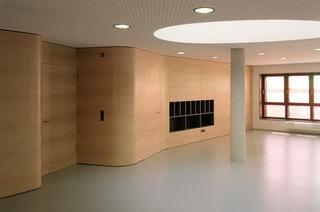
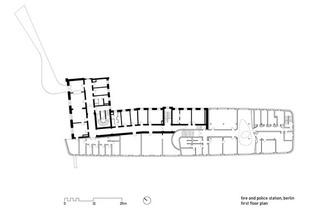
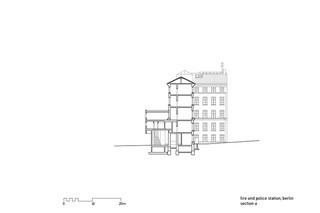
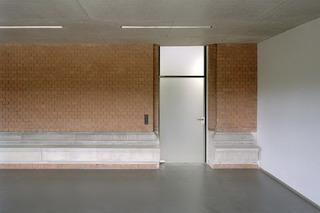
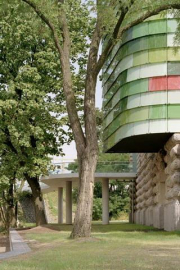
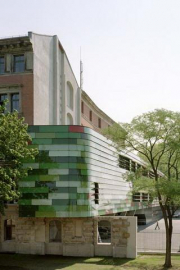
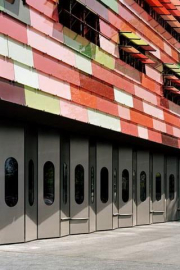
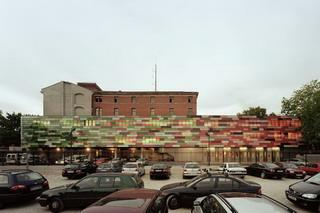
 copy.jpg)
-1.jpg)